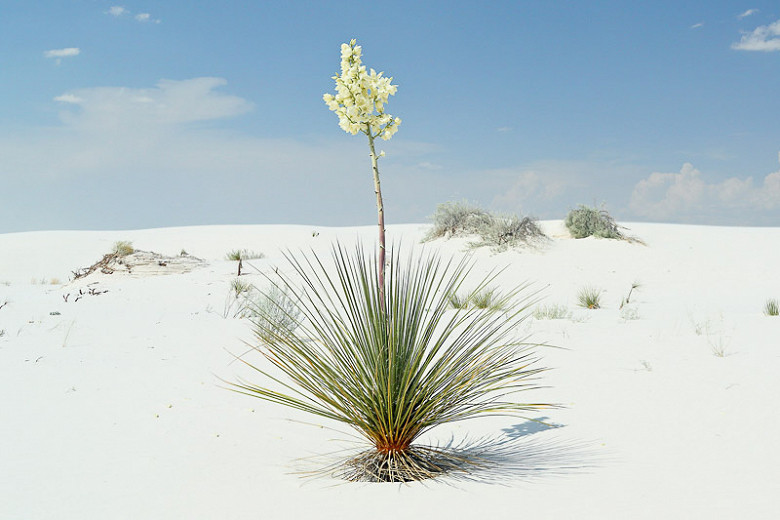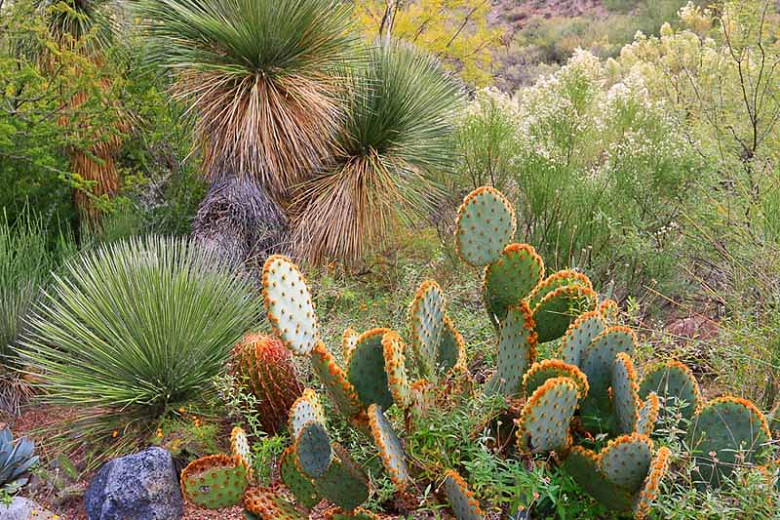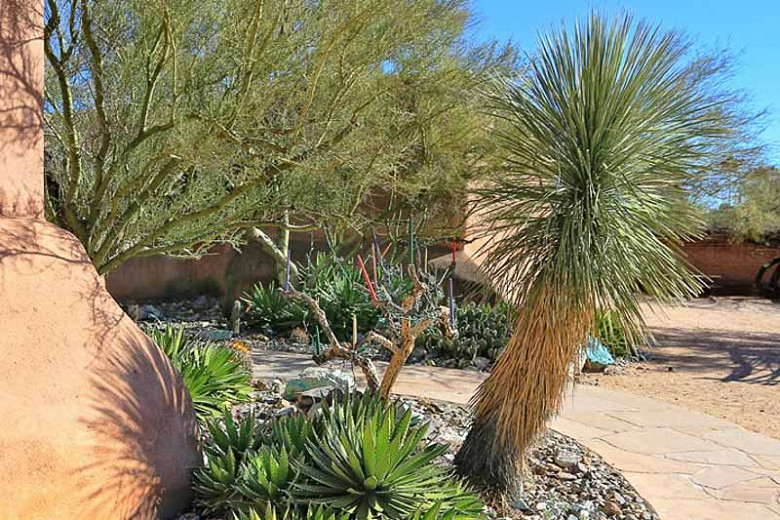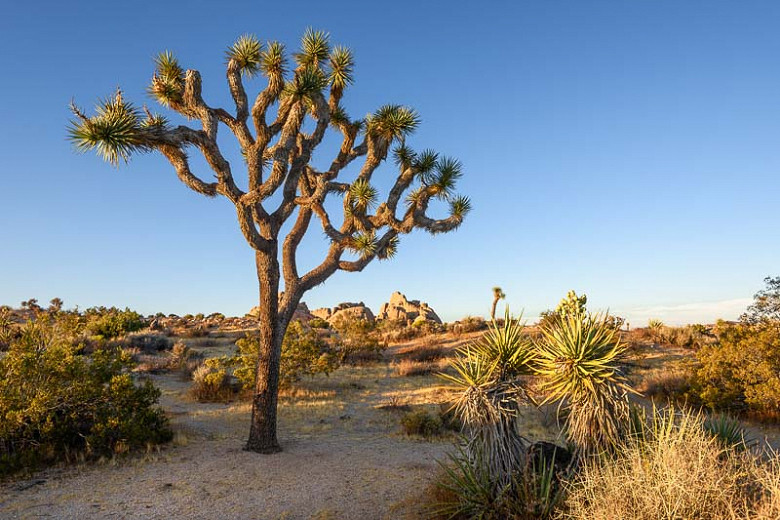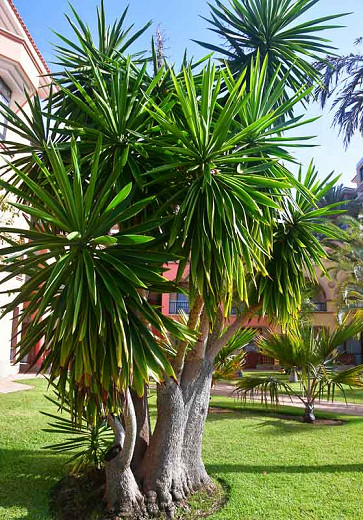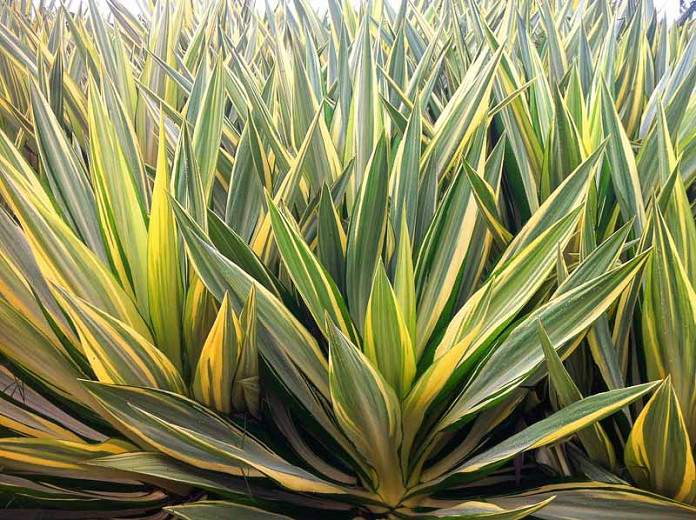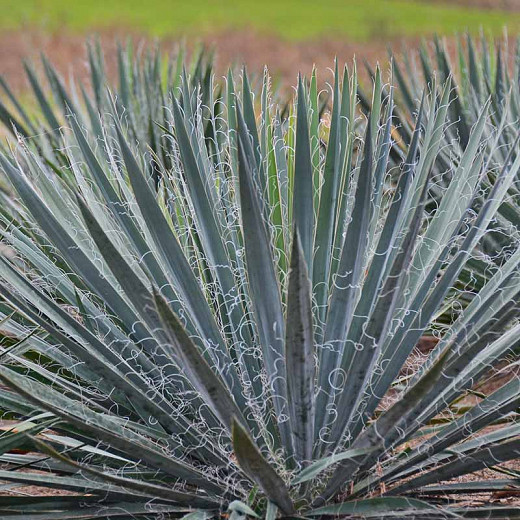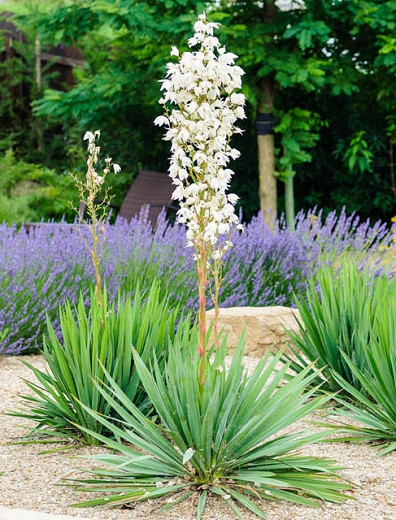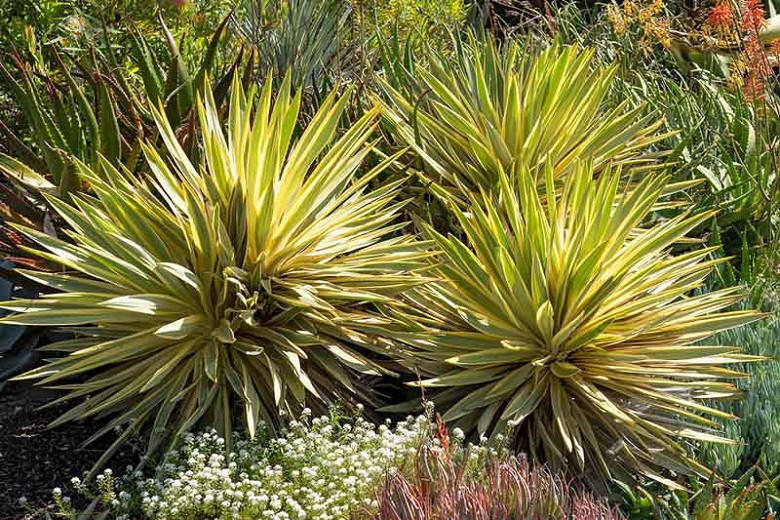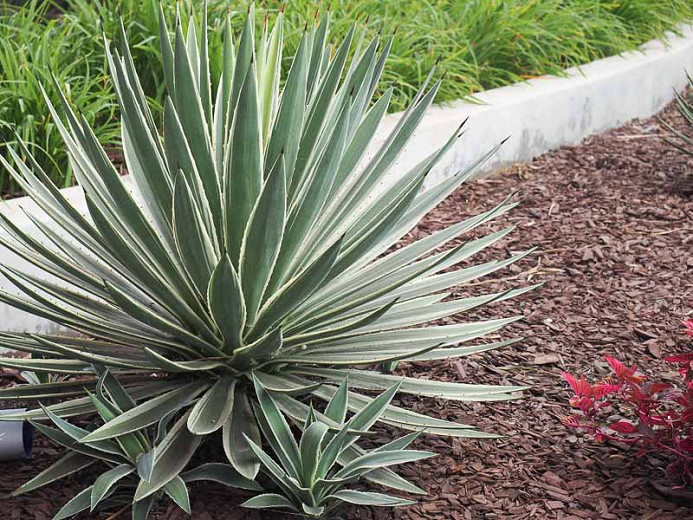Yucca elata (Soaptree Yucca)
One of the most reliable trunking yuccas for cold climates, Yucca elata (Soaptree Yucca) is a very ornamental, slow-growing, evergreen tree-like yucca boasting a dense rosette of narrow, linear, blue-green leaves, up to 4 ft. long (120 cm). The sharp-pointed leaves display white margins and produce fine, silvery filaments. The rosette is mounted atop a tree trunk, which is covered with the straw-colored fibers of the old leaves, creating a shaggy skirt. Yucca elata frequently becomes branched with age with up to 7 branches. In late spring to early summer, it is topped with a striking flowering stalk, up to 4-6 ft. long (120-180 cm), that rises well above the foliage, and bears large clusters of white flowers, sometimes tinged with either green or pink. They give way to brown, woody seed capsules that are interesting. This species is highly tolerant of drought, heat and frost. It withstands temperatures as low as 0°F (-18°C). Yucca elata has been used for a variety of purposes, but it is best known for the soap or shampoo that can be produced from its roots and trunk, hence the common name. One of largest and most fine textured yuccas, Soaptree Yucca is an outstanding accent plant. The scented flowers and low maintenance make it a great choice for dry and water-wise landscapes.
- Adds interest to the garden and grows up to 6-20 ft. tall (180-600 cm) and 8-10 ft. wide (240-300 cm). Growth is extremely slow, about 1 in. (2.5 cm) in height a year.
- Easily grown in dry, well-drained soils in full sun. Occasional to infrequent summer irrigation needed, but will grow faster if well watered. Prefers alkaline conditions.
- Deer and rabbit resistant, this plant attracts hummingbirds
- Provide a striking focal point in beds and borders, gravel gardens, xeriscape gardens, Mediterranean gardens.
- Propagate from seed or from offsets formed on the rhizomes of established plants.
- Toxic to dogs, toxic to cats, toxic to horses.
- Native to central Arizona, southern New Mexico, western Texas, and Coahuila and Chihuahua, Mexico.
Requirements
| Hardiness | 6 – 11 |
|---|---|
| Heat Zones | 10 |
| Climate Zones | 7, 8, 9, 10, 11, 12, 13, 14, 15, 16, 17, 18, 19, 20, 21, 22, 23, 24 |
| Plant Type | Cactus – Succulents, Trees |
| Plant Family | Yucca |
| Exposure | Full Sun |
| Season of Interest | Spring (Early,Mid,Late)Summer (Early,Mid,Late)FallWinter |
| Height | 6' – 20' (180cm – 6m) |
| Spread | 8' – 10' (240cm – 3m) |
| Spacing | 120″ (300cm) |
| Water Needs | Low |
| Maintenance | Low |
| Soil Type | Loam, Sand |
| Soil pH | Acid, Alkaline, Neutral |
| Soil Drainage | Well-Drained |
| Characteristics | Showy, Evergreen |
| Native Plants | United States, Rocky Mountains, Utah, Southwest, Nevada, Arizona, New Mexico, Texas |
| Tolerance | Deer, Drought, Rabbit, Dry Soil, Rocky Soil |
| Attracts | Hummingbirds |
| Garden Uses | Beds and Borders |
| Garden Styles | City and Courtyard, Gravel and Rock Garden, Mediterranean Garden |
